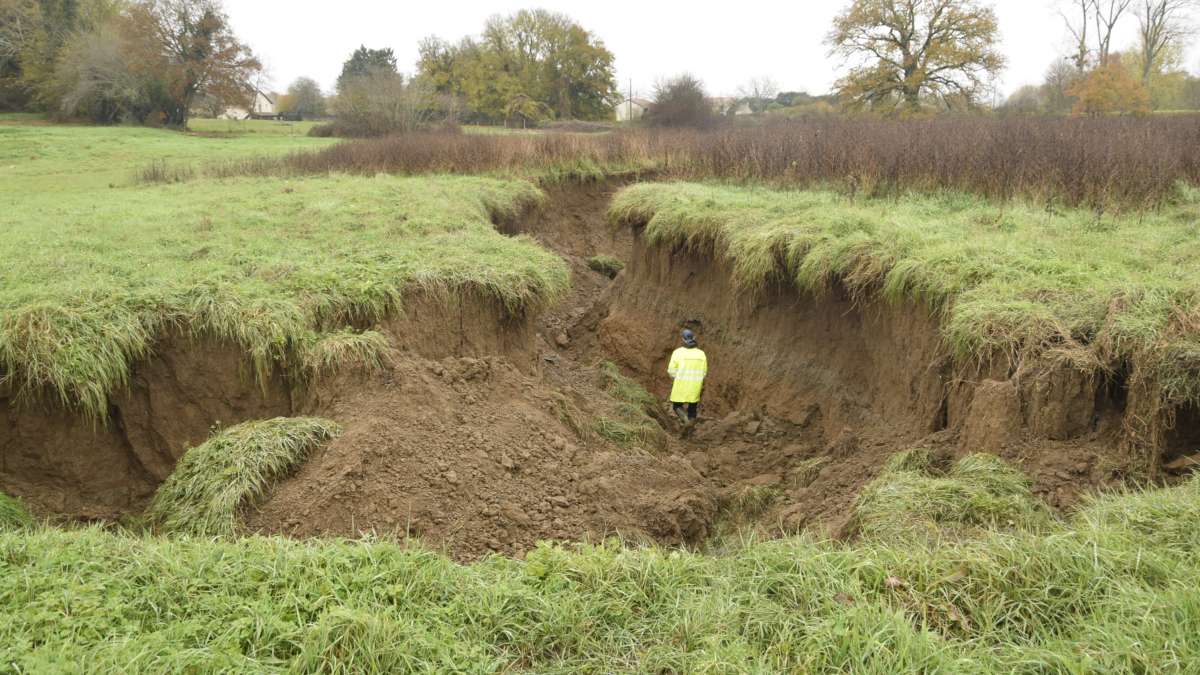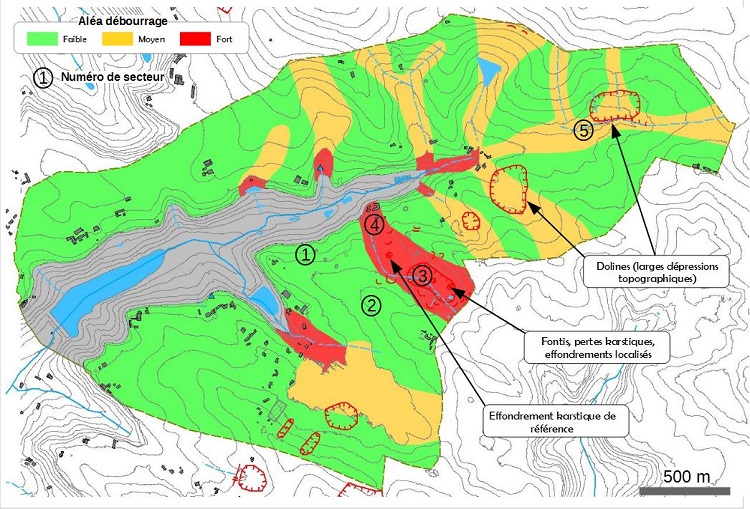
The work carried out as part of the development of this methodology was presented at the National Geotechnics and Engineering Geology Days on 2 and 3 November.
Poorly known or even difficult to understand, the risk of karst ground movements has to date been sparsely covered and is often limited to delineating the forms and collapses recorded at the ground surface.
Better understanding the risk to integrate it into development
As part of a national risk management policy carried by the Ministry of Ecological and Inclusive Transition, BGRM and Cerema have developed a methodology intended to further our understanding and integration of karst phenomena.
A technical guide is being drafted by Cerema and BRGM to provide a pedagogical description of underground processes at play and to offer the keys to facilitating the implementation of a legible and robust hazard qualification method.
Nearly 40% of metropolitan areas are concerned by karst risks. The risk covered here is that affecting limestone formations, especially in the Paris, Aquitaine and Mediterranean basins, but also those of the mountain ranges.
Karst refers to a landscape consisting of superficial forms (sinkholes, poljes, canyons and dry valleys…) and underground forms (caves, galleries and networks…), combined with a specific hydrological regime resulting from the dissolution of carbonate rock (or evaporites, covered elsewhere).
These underground phenomena can cause significant damage on the surface, both material and human, and the challenge is to better take them into account in planning documents.
In recent years, Cerema has been studying large-scale karst networks in Charente to assist state services and communities in their risk management and to reduce the vulnerability of assets above cavities (knowledge improvement and guidelines).


To understand these phenomena, we must conduct a multidisciplinary analysis involving geology, geotechnics and hydrology. The proposed method was developed in consultation with a dozen risk experts, geologists and geotechnicians from both organisations.
The guide will first present an overview of the karst processes and their surface consequences, followed by the evaluation method.
Knowledge of the karst phenomena involved makes it possible to better anticipate risk.
A multi-step method
The Cerema and BRGM joint method involves several steps, and consists in identifying the phenomena involved in a given region that can cause ground movements:
-
Characterisation of the area studied in geological, topographical and piezometric terms, by gathering as much data as possible, and creating one or more so-called informative maps
-
Assessment of the site's predisposition to ground movements, via multi-criterion analysis. Each criterion is thus characterised according to its impact on the process studied (e.g.: characteristics of the limestone massif, discontinuities/fractures in the massif, concentration of surface waters, presence of superficial formations, etc.)
-
Assessment of the intensity of expected ground movements (diameter) and of the hazard.
This work was presented at the National Geotechnics and Engineering Geology Days (JNGG) in Lyon in December 2020 and was the subject of an article including two case studies corresponding to application of the methodology for creating hazard maps: in Belfort and at a Lot-et-Garonne site.


